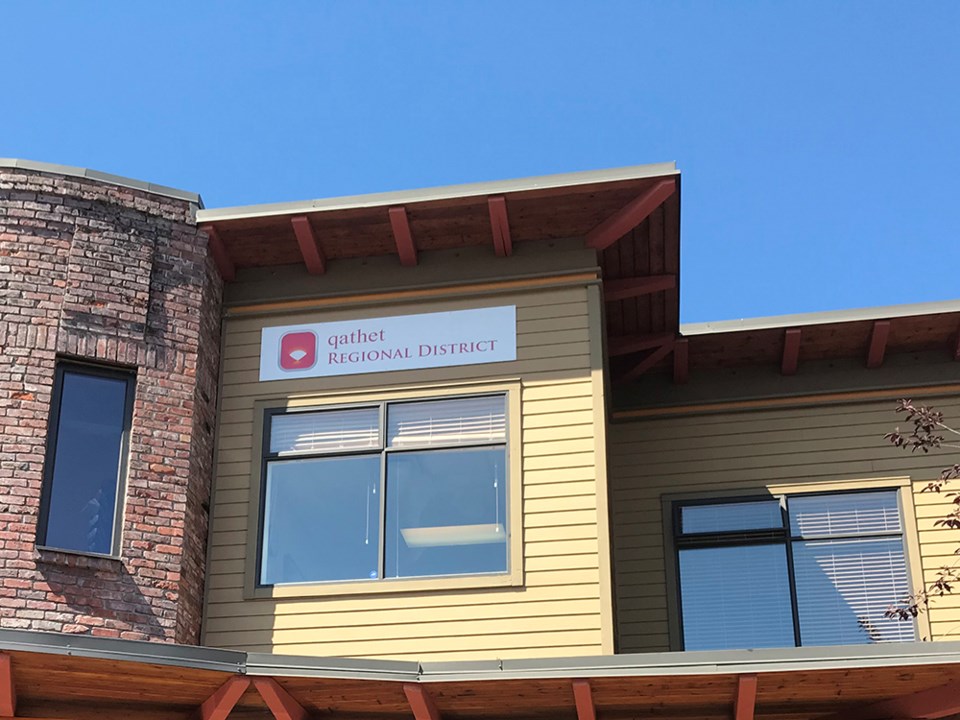qathet Regional District (qRD) directors heard about housing needs for electoral areas A to D.
At a planning committee meeting on January 10, consultant Patricia Maloney presented her findings from the regional district housing needs report, which her consulting firm authored. The committee has recommended that the regional board accept the report.
Manager of planning services Laura Roddan said completion of the report was a strategic goal for 2023 and fulfills a recommended action from the 2021 housing needs report. She said strategic direction will be provided for official community plan housing policy actions over the next five years.
Maloney said historical growth in the electoral areas has been slow, but steady. She said there was a bit of an anomaly in Electoral Area A during the last five years. She said it could be COVID-19 related. A lot of people who own property on Savary Island thought it was a great idea to move there, she added.
“We’re not sure if that growth is going to continue,” said Maloney.
She said the population has grown in the electoral areas, some more than others with a common theme being an aging population.
Maloney, in her presentation, did a breakdown of median incomes and affordable rent, based on 30 per cent of median income. She said in Electoral Area A, an affordable rent for a household would be $1,530 per month. In Electoral Area B it would be $1,650, in Area C, $1,625 per month and in Area D (Texada Island), $1,360 per month, based on median household income.
Maloney said the study also looked at what some of the market rents were in 2023, and in some cases, goes beyond what people can afford.
qRD is not seeing the attraction of young people and families, according to Maloney. She said there are a number of reasons, including that aging people are choosing to stay in their own homes longer.
“This means housing units are not coming up on the market and are not there to provide housing for a family,” said Maloney.
In Area A there is a housing deficit of 23, in Area B, 75, Area C, 140 and Area D, 100, according to Maloney. Housing types needed include 15 per cent bachelor and one bedroom, 60 per cent two bedroom, 15 per cent three bedroom and 10 per cent four or more bedrooms, Maloney’s report stated.
Recommendations include supporting secondary suites in all residential areas and accessory dwelling units where provincial septic and water servicing standards can be met. Other steps included promotion of nonprofit housing societies, working with BC Transit to improve rural service and the promotion of public information on available grants. A review of manufactured home park policies was also recommended, plus the establishment of a regional housing reserve fund.
Missing builds
Electoral Area D alternate director Joseph Scott said in the staff report there was a comment that there were no new home builds in Van Anda since 2005, when in fact there have been 22. Maloney said the figures in the report were from the BC government. She added that tracking construction in a regional district that does not have building permits is not easy.
“If, in fact, those housing units are there, we would be more than happy to recognize them,” said Maloney.
Scott said the figures he was quoting were from BC Assessment.
City of Powell River director George Doubt said the housing needs study was great and that he found the information valuable.
Electoral Area B director Mark Gisborne said regarding the recommendations, his area’s official community plan already supports secondary suites in all residential areas. In terms of supporting accessory dwelling units, Gisborne said there can be multiple dwellings on one well and multiple dwellings on one septic system. He said there is a property in the vicinity of his farm that has 40 addresses on the property, which is less than 10 hectares.
“In the rural setting we have the desire to protect the rural character,” said Gisborne. “When someone comes in and buys a large property, nine or 10 hectares, and goes: how do I get my money back on this? They put in some housing units and start looking at 10, 20, 30, 40 units. That gets the community up in arms because we want to try to find balance in the rural areas.
“The recommendation supporting accessory dwelling units should come with a caveat of how do we maintain that balance with the rural character and setting.”
Join the Peak's email list for the top headlines right in your inbox Monday to Friday.



